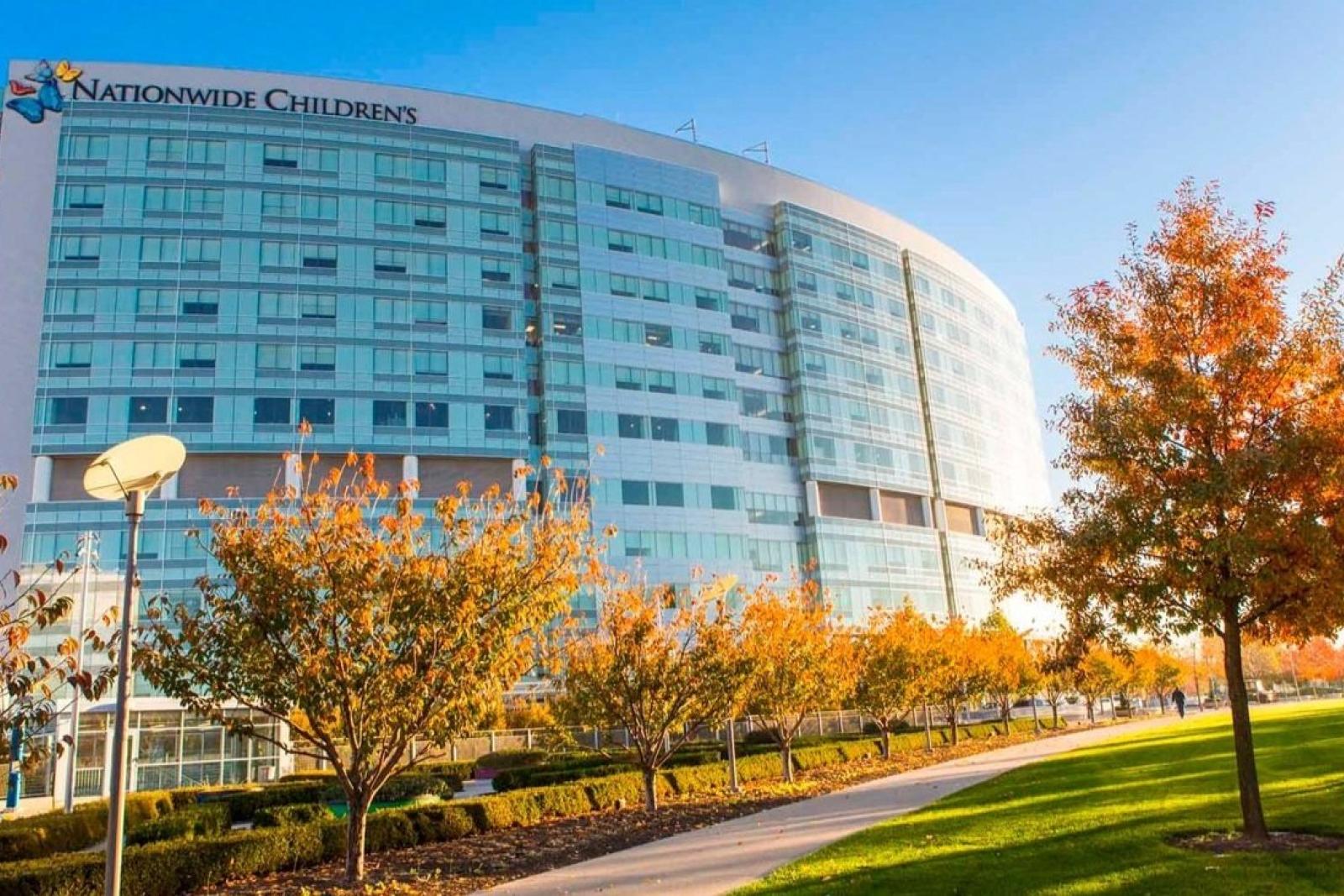Cultivating community focus through partnership with Nationwide Children’s Hospital

In 1975, Professor Emeritus Milap Nahata, PharmD, MS, FASHP, FCCP, FAPhA, FPPA, joined Nationwide Children’s Hospital (NCH) as the first clinical pharmacist on staff. Though he walked the halls as a trained medical professional, physicians, nurses and hospital administrators alike were wary
of his role’s importance.
“The value of a pharmacist’s contributions needed to be demonstrated to establish credibility with the health care team and administration,” Dr. Nahata recalled of his early days.
Dr. Nahata laid the foundation for pediatric pharmacy at the hospital and clinical pharmacists as respected providers. Nearly 50 years later, pharmacists have become an integral part of the interprofessional care model at NCH.
Today, more than 60 clinical pharmacists are on staff in the NCH care system, which has become a valuable partner of The Ohio State University College of Pharmacy. Ohio State graduates, students, residents and faculty may earn experiential hours at the NCH locations, and each new role strengthens the partnership.
Sharing our knowledge
Three of those Buckeye pharmacists at NCH are shared Ohio State College of Pharmacy faculty members splitting their time between Parks Hall and NCH locations: Associate Professor Vinita Pai, PharmD; Associate Professor Anna Gehres, PharmD, BCACP; and Assistant Professor Kelsey Schmuhl, PharmD, BCACP.
Dr. Pai was the first to join the NCH system as a College of Pharmacy member, pioneering the role of
shared faculty. After a residency at NCH, Dr. Pai completed professional development as a Pediatric
Pharmacotherapy Fellow from 1998-99. Now, when she isn’t leading PharmD classes, she serves as an advanced patient care pharmacist in the Bone Marrow Transplant (BMT) and Cellular Therapy Program at NCH.
“This role not only allows me to contribute to the education and training of future pharmacists, but it
also provides a platform to conduct clinical research,” Dr. Pai said.
“The insights gained from my clinical experience serve as a cornerstone for educating the next generation of pharmacists.” Establishing and maintaining these shared faculty roles requires continuous communication between NCH and clinical faculty leaders, but it’s seen as well-worth the effort to improve the health care landscape of Central Ohio.
“We view these shared responsibilities as bi-directional assistance,” said Nationwide Children’s Hospital Chief Pharmacy Officer Matt Sapko, PharmD, MS. “Colleges can assist with the future workforce by helping leaders to develop the knowledge and skills needed for success. Additionally, there is innovation occurring at the college that we can either learn from or adopt at NCH and vice versa. Having like-minded pharmacists working in different practice sites is invaluable collaboration
to a pharmacy team.”
Defining the relationship
Not only do shared faculty open the door to knowledge exchange, but it creates stronger communication as a whole. With vastly different practices at the respective institutions, collaborating regularly prevents any one group from becoming isolated in their work.
“There are very different priorities in these two spaces that I function,” Dr. Gehres acknowledged. "With this formal relationship between the two, we communicate regularly for the sake of faculty/professionals who split their time. Because of this, we can understand what the differences are in institutional and academic settings and how we can tackle them together.”
Dr. Gehres spends a day each week at an NCH outpatient internal medicine clinic. She’s been a part of the clinic’s health care team for the past 12 years and it’s been something of a full-circle experience.
“I was hired by Dr. Nahata and thanks to his passion for serving at Children’s, I was able to envision
using that space as a practice site,” Dr. Gehres reflected. “When I first began in this shared position, I got to establish our location as a pharmacy practice site.”
Dr. Gehres also served as a resident at Nationwide Children’s Hospital prior to joining the College of Pharmacy. Now, on her days in the clinic, she has the chance to invite community care residents and PharmD students back into that space.
Each of the shared faculty members can utilize their NCH location as an experiential learning site for
Introductory Pharmacy Practice Experience (IPPE) and Advanced Pharmacy Practice Experience (APPE) students and residents.
“A lot of residents and students who spend time with me on site comment that they see a highly functioning interdisciplinary team,” Dr. Schmuhl noted. “Since I work at an NCH location that focuses on adolescent medicine, it’s a great example of interprofessional work. We’ve got social workers, nurses, pharmacists – everyone working together for the patient. That’s not always visible at
care locations.”
“When I first started with the adolescent medicine clinic, they had never had a pharmacist involved
before. I’ve learned a lot that I didn’t necessarily get in school because of that,” she said. “Sharing that I face challenges in clinic or that I’m still learning has proven to be a valuable experience to bring to the classroom.
I want students to understand more than my patient interactions at NCH. They should know that balancing my clinical time is hard; there’s a lot of space I still have to grow and that’s OK.” There’s much to celebrate in the world of pharmacy advancements since Nahata stepped up as the first NCH
clinical pharmacist in 1975, but there’s still more to accomplish. “Together, we play a vital role in
educating and shaping the future pharmacists of Ohio, ensuring they are well-prepared to meet the diverse needs of the patients they will serve,” Dr. Pai said.
The College of Pharmacy’s faculty members continue to blaze new trails through partnership with Nationwide Children’s Hospital and look to the future for what they can try next.